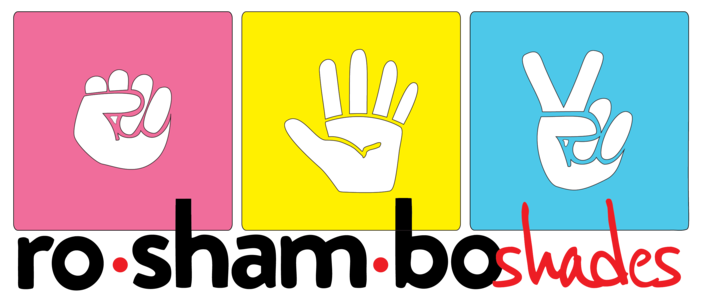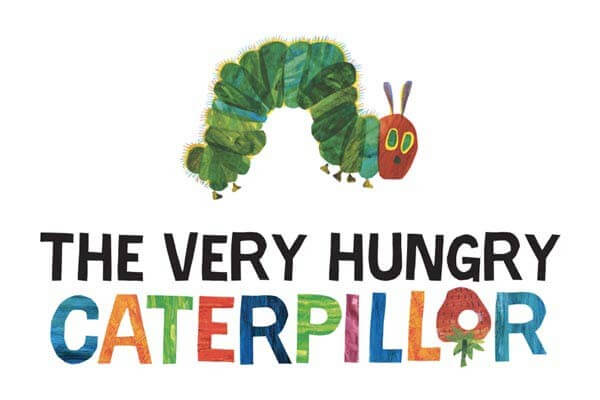Saints Who Struggled: What St. Thérèse, St. John of the Cross, and Others Teach Us – Honest Hope for Heavy Days
Many saints carried deep interior darkness—doubt,anxiety,grief,andseasonsthatfeltlikeGod’sabsence.Theirlivesdon’tdenysuffering;theyshowhowgraceworkswithinit.Thisguidegathershard-wonwisdomfromSt.ThérèseofLisieux,St.JohnoftheCross,St.TeresaofCalcutta(MotherTeresa),St.PauloftheCross,and others so you can face depression and anxiety with honest hope in Jesus.If prayer feels dry, if the future looks small,or if you’re supporting someone in despair,the saints offer language,practices,and perspective that have steadied believers for centuries.Their path is simple and strong: little steps of love,fidelity in darkness,and letting the Church carry you when you can not walk.Trusted by readers seeking pastoral clarity and practical steps that respect both faith and clinical care.
| Saints suffered, too | Holiness isn’t the absence of symptoms; it’s fidelity in love. |
| Darkness can be purifying | Dryness and doubt don’t mean failure—often, they mature faith. |
| Grace + help | Saints used ordinary means: confession, community, wise counsel. |
Description – Saints Who Struggled
TheChurchcallssaints“friendsofGod,”notbecausetheyfeltconstantspiritualfireworks,butbecausetheykeptchoosingloveinweakness.Someenduredillnesses,grief,scrupulosity,orseasonsofprofounddesolation.Theirwitnessspeakstoanyonelivingwithdepression,anxiety,orintrusivethoughts.Thispagesharesthecontoursoftheirstrugglesandthepracticesthatsustainedthem—shortprayers,sacraments,mercytowardoneself,andconcreteactsofcharity.Italsoexplainshowthesespiritualtoolscomplementtherapy,medication,andcrisisplanningwhereappropriate.Holinessisfullycompatiblewithgettingthehelpyouneed.Key Features & Specs
Compact Reference
- Daily practice: 10–15 minutes (Scripture verse + “little way” act)
- Weekly rhythm: Mass, brief Adoration, simple examen
- Monthly check-in: Confession + review your support plan
- Safety note: If suicidal intent/plan emerges, enact your crisis plan immediately
Image Alt Text Placeholders
- “Simple wooden crucifix beside a well-worn rosary”
- “Candlelight near an icon of Christ, evoking quiet prayer”
- “Open journal with Scripture verse and small gratitude list”
- “Visitor seated in a quiet chapel during Adoration”
Benefits for the Suffering Heart
- Belonging: You’re not a “bad Catholic” because you’re depressed; the saints walked this road.
- Language for the Dark: Short prayers and images that fit when words are hard.
- Stability: Sacraments and small routines reduce decision fatigue.
- Compassion: A saintly realism that removes shame and encourages wise help.
- Meaning: Uniting suffering to Christ transforms it into love for others.
Mini Checklist
Best if you need… gentle structure, merciful honesty, and tiny steps of love.
Avoid if… you’re in immediate danger—contact emergency services or a crisis line first.
Who It’s Perfect For
- Catholics facing depression, anxiety, or spiritual dryness
- Family/friends seeking faith-rooted support ideas
- Parish leaders curating resources on mental health and holiness
- Anyone integrating therapy with a living Catholic faith
Not ideal for: purely academic debate detached from pastoral care.
What These Saints Teach Us (Profiles + Practices)
St. Thérèse of Lisieux — The Little Way in Heavy Weather
Struggle Snapshot: Physical frailty, emotional sensitivity, seasons of spiritual dryness. Near the end of her life, she
endured a darkness about faith itself.
Key Insight: Holiness is doing small things with great love, especially when you feel nothing.
Practice: Choose one “little” act daily (a kind word, a silent offering, washing dishes gladly). Whisper, “Jesus, for love
of You,” and move on—no self-scoring.
Guardrail: If you’re scrupulous, limit self-analysis. Pick one confessor and follow his guidance.
St. John of the Cross — Meaning in the “Dark Night”
Struggle Snapshot: Imprisonment, betrayal, profound desolations.
Key Insight: The “dark night” isn’t punishment; it’s a purification that detaches us from false securities so we can
receive God more freely.
Practice: Sit 10 minutes before the Lord (at home or in Adoration). Repeat slowly: “The Lord is my light and my salvation”
(Ps 27:1). Let silence work.
Guardrail: Desolation can be spiritual or psychological. If symptoms impair life, add clinical care.
St. Teresa of Calcutta (Mother Teresa) — Love in Long Dryness
Struggle Snapshot: Decades of interior darkness while caring for the poorest.
Key Insight: Feelings aren’t the measure of faithfulness. Love is.
Practice: Choose one small work of mercy each day (check on a neighbor, send a text of encouragement).
Guardrail: Don’t romanticize suffering—seek help for burnout; rest is part of charity.
St. Paul of the Cross — Naming and Offering Suffering
Struggle Snapshot: Intense interior trials and misunderstandings.
Key Insight: Naming your suffering in Jesus’ presence unites it to His Passion.
Practice: “Three-line offering” each night: (1) Name today’s sorrow, (2) place it at the Cross, (3) ask for one person to
benefit.
Guardrail: Offering suffering doesn’t mean refusing treatment. Use every ordinary help.
St. Josephine Bakhita — Freedom, Forgiveness, and Dignity
Struggle Snapshot: Trauma, enslavement, displacement.
Key Insight: In Christ, forgiveness becomes a path to dignity and freedom, not denial of pain.
Practice: Hold a painful memory before Jesus; say, “You were there.” Ask for one step toward freedom (boundary, therapy
session, journaling).
Guardrail: Forgiveness is not tolerating abuse—seek safety and wise counsel.
(Optional Additions) St. Dymphna (patron of mental health), Bl. Carlo Acutis (simple fidelity), Venerable Matt Talbot (addiction recovery), St. Mary of the Cross MacKillop (perseverance amid opposition).
How to Choose the Right Next Step (Saint-Inspired)
Decision Criteria
- Energy level today: Pick something you can do in 5–15 minutes.
- Symptoms/severity: If life is impaired, prioritise clinical help; add prayer that doesn’t overwhelm.
- Support network: One priest/director, one clinician, one friend.
- Scrupulosity flags: Reduce checking; practice trustful surrender (one confessor).
- Concrete love: Select one “little way” act; write it down.
Comparison Snapshot
| Little Way Routine | Small acts, gentleness | 10–15 min/day | Depression “low energy” days | Pair with therapist goals. |
| Dark Night Silence | Simple presence, trust | 10 min | Anxiety/spiritual dryness | Add breath prayer. |
| Works of Mercy | Outward love | Variable | Rumination/overthinking | Keep it small, sustainable. |
Setup / Use / Care (How-To)
- Pick One Saint for a Week: Read a short quote or paragraph daily.
- Choose a “Little Way” Act: One concrete kindness; schedule it.
- Anchor Scripture: Carry a pocket verse (Ps 23; Mt 11:28). Read during spikes.
- Sacramental Rhythm: Sunday Mass; Confession every 2–4 weeks; brief Adoration.
- Journal Gently (3 lines): Gratitude, burden, request. No overanalysis.
- Community Touchpoint: Message one trusted person; aim for a weekly check-in.
- Clinical Integration: Keep therapy/GP appointments; share your plan.
- Monthly Review: Celebrate consistency, adjust without shame.
Maintenance Tips: Keep a “Saints in the Dark” card in your phone with your verse, one prayer, one person to text, and crisis numbers.
Social Proof & Trust
“Thérèse’s little way let me stop judging myself and simply love one person a day.” — Young adult
“In a season of dryness, John of the Cross taught me to sit in silence without panic.” — Retreatant
“Pairing a weekly mercy act with therapy moved me from stuck to steady.” — Parent of two
Trust Notes: Confidential contact, no stigma, encourages professional care, faithful to Catholic teaching.
One-Line Assurance: Feeling nothing does not mean God is absent; it may mean He is holding you more quietly than before.
Why Choose Us
- Pastoral + Practical: Realistic, saint-tested tools you can start today.
- Mercy-Forward: Removes shame; invites gentleness and courage.
- Integrated Care: Honors therapy, medication, and safety planning.
- Accessible: Short routines, printable checklists, plain language.
- Community-Oriented: Helps you find support, not go it alone.
CTA
Start your “Saint-in-the-Dark” week. Pick Thérèse or John of the Cross, choose one tiny act of love, and set a 10-minute
prayer time.
Low-intent option: Download the 1-page “Little Way Plan” to carry on your phone.
Conclusion
The saints don’t hand you a ladder out of suffering; they kneel beside you and point to Jesus. Their message is steady and simple: take the next small step of love, anchored in the Sacraments, supported by wise help. Hope is often quiet, but it holds.
Internal Linking
- Read Catholic Help for Depression: Finding Hope in Jesus → [/resources/catholic-help-for-depression]
- Learn How the Sacraments Heal → [/resources/how-the-sacraments-heal]
- Find Confession and Adoration resources → [/resources/confession-guide]
- Contact us confidentially → [/contact]
FAQs
Did saints really feel despair or doubt?
Many experienced deep interior darkness, grief, or severe trials. Their fidelity in those seasons shows that holiness is possible in
weakness.
Is dryness in prayer a sign I’m doing something wrong?
Not necessarily. Dryness can be a normal stage that purifies motives. If symptoms impair daily life, add clinical help alongside prayer.
How can I practice the Little Way when I’m exhausted?
Choose tiny acts: answer one message kindly, wash one dish cheerfully, pray one decade. Offer it to Jesus and move on—no scorekeeping.
What’s the difference between a “dark night” and depression?
A dark night is primarily spiritual (loss of felt consolation), while depression is a clinical condition affecting multiple domains. They
can overlap; seek discernment with a priest and clinician.
Can I be a good Catholic and take medication?
Yes. The Church encourages prudent medical care. Medication can support your participation in prayer and community.
How do I talk to my priest about mental health?
Ask for a brief appointment or mention it in confession: simple, honest, and direct. Priests can accompany you and encourage professional
care when needed.
What if I feel worse after trying to pray?
Shorten the practice, switch to a Psalm or breath prayer, and ask someone to sit with you. If distress escalates, enact your safety plan and
contact your clinician.
Meta & SERP Elements
Meta Title (≤60): Saints Who Struggled: Lessons from Thérèse & John of the Cross
Meta Description (≤160): Real hope from saints who faced darkness—Thérèse, John of the Cross, Mother Teresa, and more.
Simple, practical steps for hard days.
URL Slug: /saints-who-struggled
OG Title: Saints Who Struggled: What They Teach Us in the Dark
OG Description: Honest stories and small steps from saints who knew depression, anxiety, and dryness—anchored in Jesus and
the Sacraments.
OG Image Alt: Rosary beside a crucifix with candlelight symbolizing hope in darkness
Schema Suggestion (JSON-LD skeleton) — FAQPage
- Five Saints, Real Struggles — Bite-size profiles with practical takeaways.
- “In the Dark” Prayer Tools — Short, repeatable prayers for anxious or numb days.
- Sacramental Anchors — Confession, Eucharist, and Adoration as steady rhythms.
- Scrupulosity Guardrails — Guidance to avoid obsessive patterns.
- Care Integration — How to combine spiritual practices with therapy and medical care.
- Mini Worksheets — Prompts for daily examen, gratitude, and gentleness.
- Community Steps — Ideas for small, doable acts of love when motivation is low.
- Family Guidance — Gentle scripts for loved ones walking alongside.



.jpg)









.jpg)





.jpeg)





.jpeg)



.jpeg)








.jpeg)



.jpeg)

.jpeg)

.jpeg)

.jpeg)




.jpeg)
.jpg)

.jpeg)






.jpeg)
.jpeg)




.jpeg)





.jpeg)


.jpeg)

.jpeg)

.jpeg)

.jpeg)







.jpeg)
.jpeg)
.jpeg)





.jpeg)



.jpeg)






.jpg)
.jpeg)









.jpg)


ulva-Logo.jpg)




.jpeg)



.png)















.png)
























